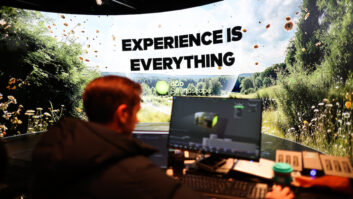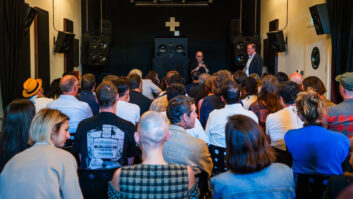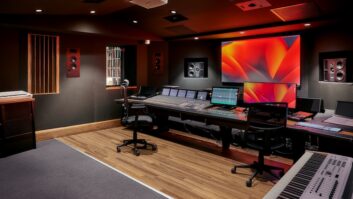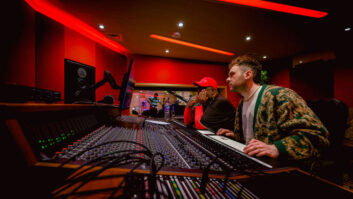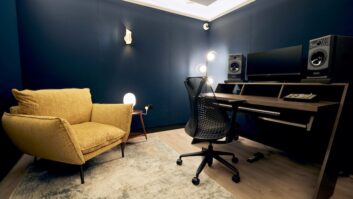by Frank Wells.
Gorgeous sunny days, mid-80s for high temperatures, nothing but blue skies above. While that’s not a typical depiction of London weather, it is an accurate description of the climate out-of-doors while the 128th AES Convention took place inside in London’s Hammersmith district. When the weather turned windy and cool on the eve of the last day of the convention, locals laughingly said they’d had the whole of British summer over the course of the four-day event.

Inside, the whole of the professional audio industry was spanned by the 128th Convention program. The British Association of Professional Recording Services (APRS) helped ensure that an elite selection of U.K. and European audio professionals were on hand to share their experiences. Industry notables walking the halls included Sir George Martin, who was presented with an honorary membership to the AES. Past AES president Jim Anderson said in his introduction of Martin, “Many think of him as the Fifth Beatle, but to those of us in this room, we only consider him as the First Beatle. The individual who took the recording studio of the day and turned it into another musical instrument for four other, equally creative individuals.”
Among other topics, broadcasters dug into the new European Union television program loudness standards, exploring both the implications of the rules, and the tools and practices necessary for their implementation. Post production and live sound had their focused presentations as well, while the tutorial sessions covering the fundamentals of audio were well attended by students. The student recording competitions had record numbers of entries. As always, the paper sessions at AES included a hint at tomorrow’s products today, ranging from advances in Class D amplification to new perceptual encoding approaches to transducer technologies to audio processing to acoustics.
The exhibits floor, though smaller than in conventions past, was filled with manufacturers demonstrating their wares. New hardware on display included the new APx515 production test set from Audio Precision and Manley Labs‘ new MicMaid 4×4 microphone and preamp router. Software demonstrations included a new object-based surround “spatial audio workstation” by Iosono designed to manipulate complex sound scenes within Steinberg’s Nuendo. Monitor maker PMC not only had a booth, but provided a surround system for the largest of the presentation rooms and hosted the “PMC Masters of Audio” lecture series in yet another room, complementing the AES program. The PMC demo room, with a gear assist from Prism and SADiE, was also used to show off the new, sub-enhanced IB2S XBD speaker system (in glorious surround) and new, compact AML2 powered loudspeakers.
A number of the presenters in the Masters of Audio series are on the staff of the nearby Metropolis Studios—a tour of which revealed a modern facility in a building that once housed an early power station, paralleling the high-tech audio infrastructure built with an analog mindset.
One novel piece of software developed at the Centre for Digital Music at the Queen Mary University of London even managed to enter (but not win) a mixing competition. Replacing the mix engineer is not the real goal for the Automatic Mixing Tools software, but rather assistance to the engineer, particularly in live sound, minding the mundane for the operator so the human involved can concentrate on the more created aspects of a mix.
When professional audio was not the focus of discussions, the conversations turned to weather and economics. As potential attendees were torn between the beckoning of a cloudless sky, summer-like weather may have affected attendance at the convention, as may have the continued threat to aircraft from the Icelandic volcano’s ash emissions (many northern U.K. airports were closed for at least part of the time of the convention) and by an off-again/on-again British Airways strike.
While it seemed at Frankfurt’s Musikmesse/ProLight and Sound in March that a cautious European marketplace was showing signs of renewed vigor, and was perhaps beginning its recovery, the Turkish economic crisis and its ripple effects throughout the EU have jeopardized those hopes.
To all our European friends, thanks for the hospitality and here’s hoping fair winds keep the troubles out of your flight paths.



